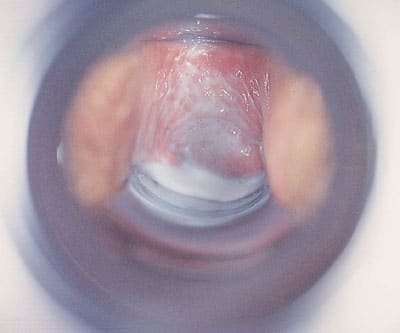
Prolonged Labor
Prolonged labor is a term used to describe labor that goes on for an unusually long time without progress.
The exact definition of “unusually long” can vary depending on the source, but it generally refers to labor that lasts longer than 18-24 hours for a first-time mother or longer than 12-14 hours for a mother who has previously given birth.
Prolonged labor can lead to an increased risk of complications for both the mother and the baby, so it is often treated with interventions such as induction or cesarean delivery.
Etiology of Prolonged Labor
Cephalopelvic Disproportion (CPD):
This is a condition in which the baby’s head is too large to fit through the mother’s pelvis.
This can be caused by several factors, including a small pelvis, a large baby, or a malpositioned baby.
Fetal malposition or malpresentation:
This is a condition in which the baby is not in the optimal position for delivery. Common malpositions include occiput posterior, breech, and transverse lie. These malpositions can make it difficult for the baby to descend through the birth canal and increase the risk of prolonged labor.
Uterine dysfunction:
This is a condition in which the uterus is not contracting effectively during labor. This can be caused by several factors, including fatigue, poor nutrition, and certain medical conditions.
Look also :What to expect at 5 weeks of pregnancy.
Placental insufficiency:
This is a condition in which the placenta is not functioning properly, which can lead to a lack of oxygen and nutrients for the baby.
This can cause the baby to become distressed and increase the risk of prolonged labor.
Maternal exhaustion:
Prolonged labor can lead to maternal exhaustion, which can cause the mother to lose the ability to push effectively. Exhaustion can be caused by several factors, including physical and emotional stress, lack of sleep, and poor nutrition.
Pathophysiology of prolonged Labor
Prolonged labor, also known as dystocia, is a condition in which the birthing process takes longer than expected.
The exact pathophysiology of prolonged labor is not fully understood, but there are several potential causes including:
Cephalopelvic disproportion (CPD): This occurs when the baby’s head is too large to fit through the mother’s pelvis.
Malposition or malpresentation of the baby:
This occurs when the baby is in an abnormal position, such as breech (feet first), during delivery.
Uterine dysfunction: This can occur due to a variety of factors such as poor contractions or a condition called a “lazy uterus.”
A history of cesarean section or other pelvic surgery
Obesity, hypertension, diabetes, and other health conditions
Maternal fatigue, emotional stress, and other psychosocial factors
Prolonged labor can lead to complications such as fetal distress, infection, and the need for a cesarean section.
Assessment Findings
Assessment of prolonged labor includes Clinical manifestations which focus on periodic uterine contractions and ineffective uterine contractions in terms of contractile stability and duration.
Nursing Management of prolonged Labor
1 . Monitor uterine activity.
These will help to detect dysfunctional patterns; this monitoring can be done by the use of palpation and also an electronic monitor.
2 . Monitor for unnecessary fatigue.
Check the patient’s level of fatigue and ability to bear the pain.
3 . Prevent complications of labor for the mother and baby.
Assess urinary bladder and pass catheterization when necessary.
Assess maternal vital signs, monitor temperature, pulse, respiratory rates, and blood pressure, and check for any abnormalities
Check the mother’s urine for acetone (this could be an indication of exhaustion and dehydration).
Assess the well-being of the fetus by monitoring fetal activity, and the color of amniotic fluid.
4 . Provide physical and emotional support to the mother
Promote relaxation of the mother through bathing and keeping her bed clean, back rubs, frequent position changes, walking (if indicated), and ensuring the environment is quiet.
Health educates clients and families about the whole process.
Nursing diagnosis for prolong labor
1 . Risk For Fluid Volume Deficit
Risk for fluid volume deficit
Risk factors:
-Restricted oral intake.
-Vomiting.
-Profuse diaphoresis.
-Hypermetabolic state.
-Mild diuresis associated with oxytocin administration
Desired Outcomes:
Patient will maintain fluid balance, as evidenced by moist mucous membranes, appropriate urine output, and palpable pulses.
Patient will be free of complications throughout period of delivery
| Nursing Interventions | Rationale |
| Monitor vital signs | This helps to serve as a baseline data and to detect any change in vital signs |
| Assess lips and oral mucous membranes alongside with the degree of salivation. | Dry lips and mucous membrane is an indication that the client is dehydrated |
| Note abnormal FHR response. | It helps check effects of maternal dehydration |
| Keep record of fluid intake/output, carry out tests on the urine to check for ketones, also assess breath for fruity odor. | Decreased urine output is an indication of dehydration as well as |
| Encourage oral fluids as appropriate. | It helps provide some calories for energy |
| Review laboratory results , e.g.: Hb/Hct, serum glucose. | Increased Hematocrit suggests dehydration. Monitoring Serum Electrolyte levels helps to detect developing imbalances. For example serum glucose levels helps detect hypoglycemia.
Ad |
| Administer intravenous fluids | Intravenous fluid helps prevent maternal and fetal electrolytes imbalance and exhaustion |
Other nursing diagnosis include:
2 . Ineffective Individual Coping
May be related to:
Unrealistic expectations/perceptions Verbalizations and behavior indicative of
evidenced by inability to cope (loss of control, inability to problem-solve and/or meet role expectations), irritability, reports of tension/fatigue.
Read also : Is pregnancy 9 or 10 months? Actually, what the wait.
3 . Risk For Fetal Injury
Related to:
Prolonged labor.
Fetal malpresentation.
Abnormalities of the maternal pelvis.
Tissue hypoxia/acidosis.










